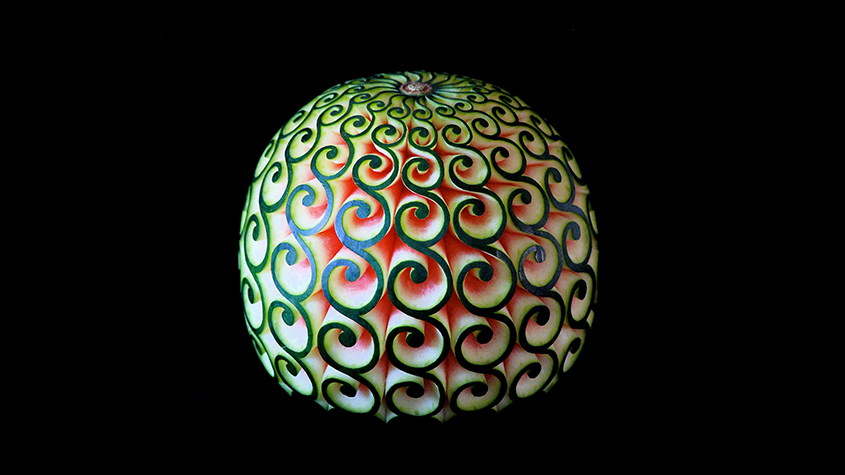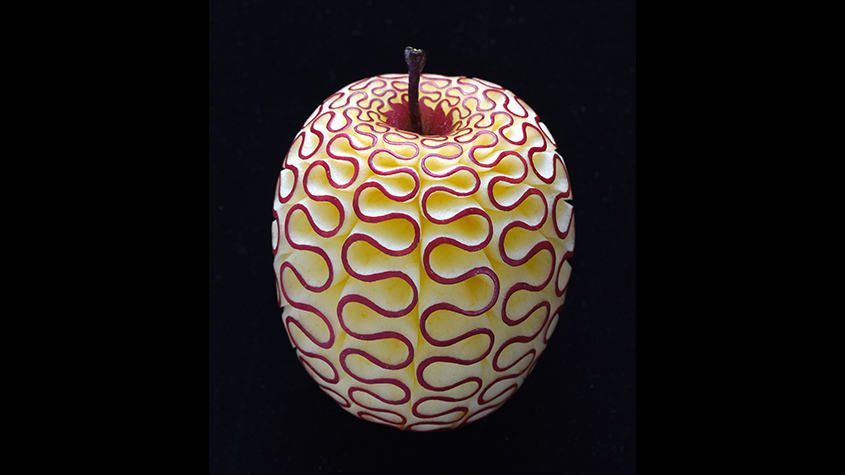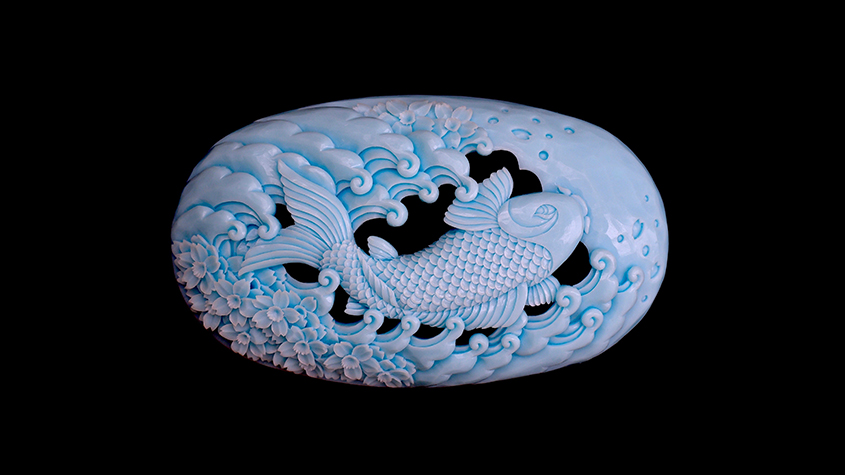The history of food carving is lost in time. Some believe it to have its roots in Thailand some 700 years ago, while some others place them in the time of the Early Chinese Dynasties. Tomoko Sato fell in love with the art and went to Bangkok to master it in 2004. The food-carving artist turns vegetables, fruits, and soaps into lavish creations made of frills and intricate arabesques. A watermelon can turn into a bouquet of fresh roses or blossom into a beautiful fractal geometry artwork. Few escape her carving tools: radishes, pumpkins, apples, avocadoes, lemons, peppers…

Ms. Sato has always been an artist. As a child, she was passionate about art and crafts. After graduating from high school, she followed her passion, studied art at university in Kyoto, and began to make woodcraft works. She went on to work for broadcasting companies building stage sets. After she left the company, she began to create her woodwork art and held an exhibition once a year. “I always thought I would become an artist and one day have exhibitions for my artwork,” she said.
Born in Fukui prefecture, she now lives and teaches her food carving art in Kyoto prefecture.
Moving on from Woodwork to Food Carving
If her first love was woodwork, in 2004, Ms. Sato, then in her early 30s, discovered food carving in a magazine and was immediately interested. Wood carving involves a lot of tools, days of work in a dusty environment, she said. “Food carving is much quicker, with a single knife, and you don’t get to keep any of your work.” “I found this approach to food carving and art interesting and I wanted to learn more about it.” She attended a few classes in Japan, and soon learned that the art was thought to originate from Thailand. She packed her bags, and two months after she discovered food carving, she was in Bangkok to master the art at the Malisa Language and Culture School. When she came back to Japan she opened her ateliers in Kyoto, and Fukui.
Once meant for royalties and religious ceremonies, food carving became a hobby for the general public. “When I carve a vegetable, a fruit, or a piece of soap, I think of it as an artwork.” “However most people consider it as a craft rather than art,” Ms. Sato explained. More and more people are curious about food carving. Some years ago, there was a sharp interest increase and many people contacted me. The interest has since leveled out. Food carving is not as popular as other forms of popular art in Japan, such as flower arrangements.
Easy fruit and vegetable carving for beginners
Food carving requires no artistic background and students can take Ms. Sato’s class without any prerequisites. Students are mostly women of all ages, from young students to retirees, but chefs or people working in the food industry also attend her class to gain some carving skills. “Food carving is really for everyone,” she said.
During a two-hour class, students usually manage to produce a basic piece. The carving time of Ms. Sato depends on the intricacy and the size of fruit or vegetable she is carving. An intricate carving of an apple takes between three and four hours.
“My main purpose is to provide a two-hour parenthesis in the people in my class so that they can experience the joy of creation,” she explained.

Food art, Inspired by Nature
Ms. Sato’s mind is always busy thinking about her next piece of art and nature is a constant inspiration. “I am always impressed by the beauty of nature,” she said. She might see a beautifully shaped snail shell, which will take life in her next creation.
As her art evolves, Ms. Sato would like to create new designs that would best express the nature and the beauty of each fruit and vegetable “to make them shine”.

Edible Art – A feast for the Eyes
The inspiring art of Ms. Sato is attracting a lot of attention. Her clients range from company anniversaries, luxury brand events, to weddings, to local community festivals asking her to use their locally produced fruits and vegetables to celebrate nature. The ephemeral nature of carved food makes it all the more fascinating. They will keep for a couple of days before drying out, according to Ms. Sato. So after the eyes, they can enchant tastebuds.
Any fruit or vegetable found in supermarkets can be used for carving. However, Ms. Sato specified, the condition of the fruit or vegetable is of utmost importance. “For example, in the case of melons, the harder the fruit, the more delicate the carving will be. It is difficult to carve on anything too soft or too hard,” she explained.

Copyright Protection of Atelier Sato’s food sculptures
Ms. Sato likes to share her art and regularly posts pictures of her creations on the Atelier Sato website, on Twitter and Instagram. She is careful to identify her pictures with an Atelier Sato logo to enforce her copyright and prevent unlawful copies. Copyright is really important for Ms. Sato because “my work has been created through my own creativity and expertise,” she said. Copyright protects her from people copying pictures she posts although this is sometimes trying. It is a delicate balance to find between publicizing her work and risking people taking the pictures she posts.
Source: WIPO

 Client Focus
Client Focus